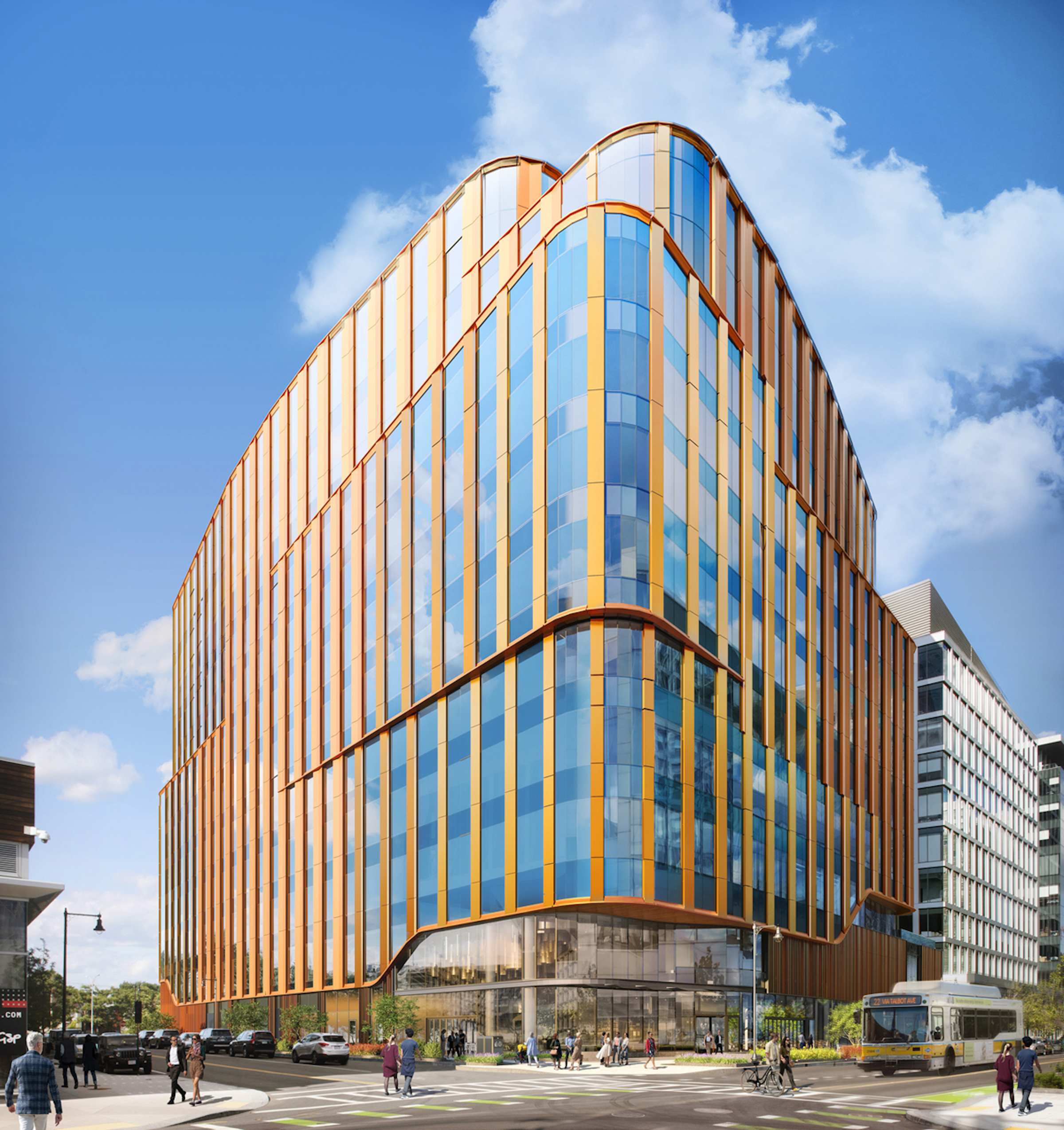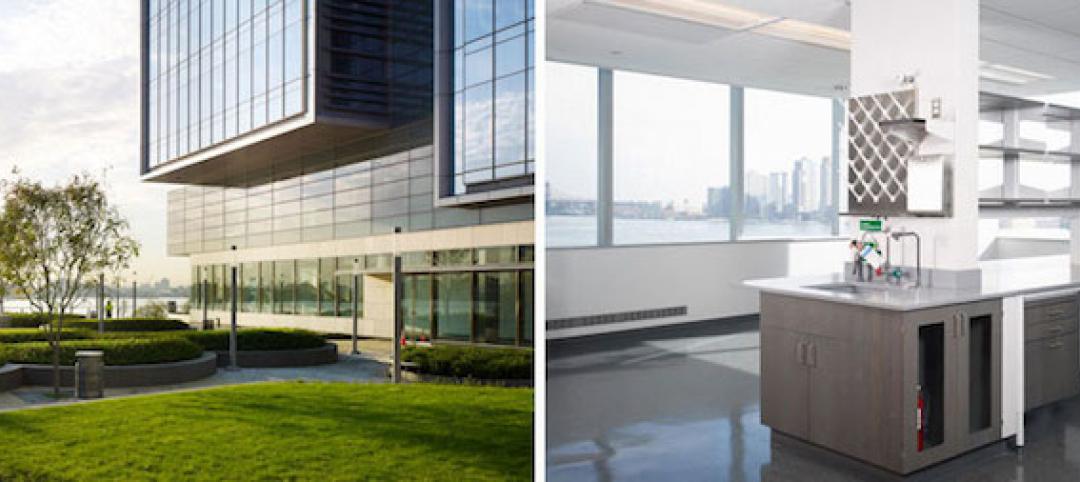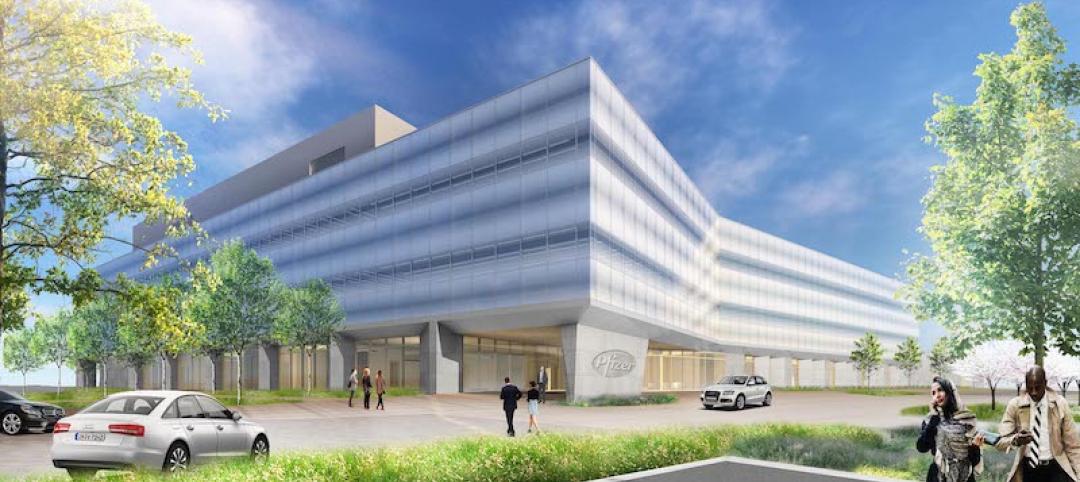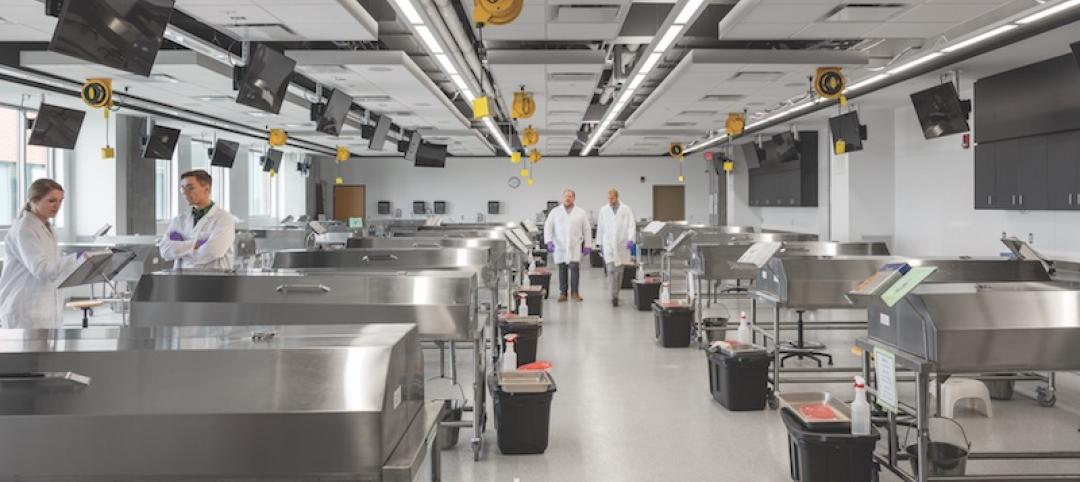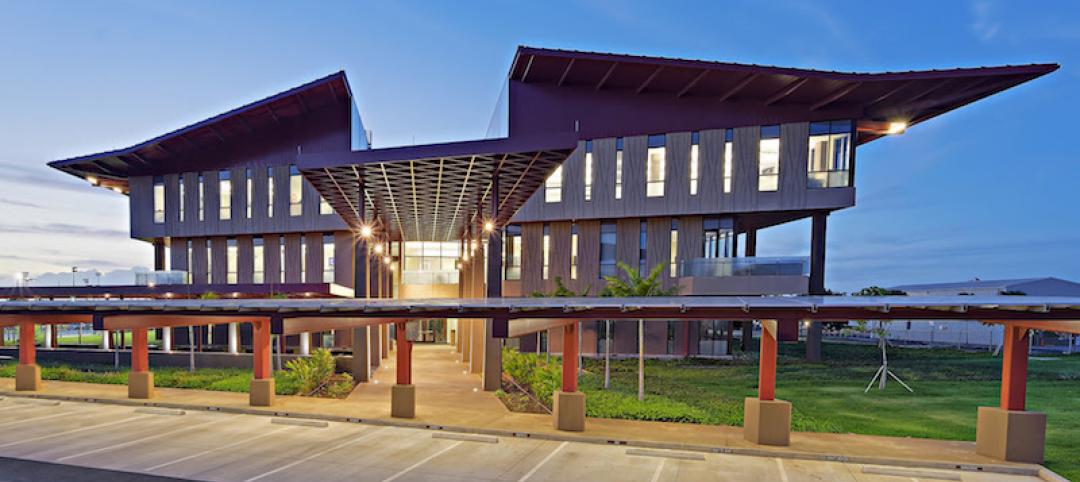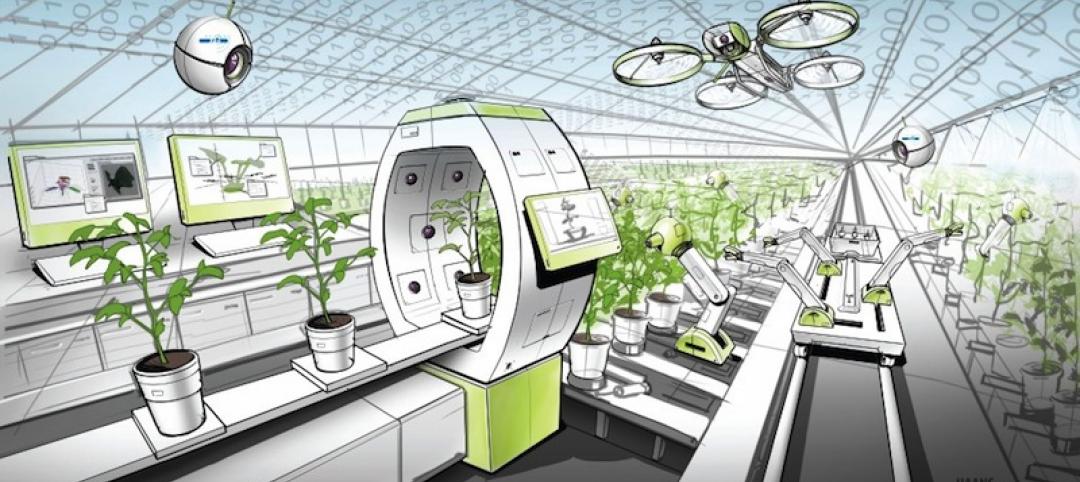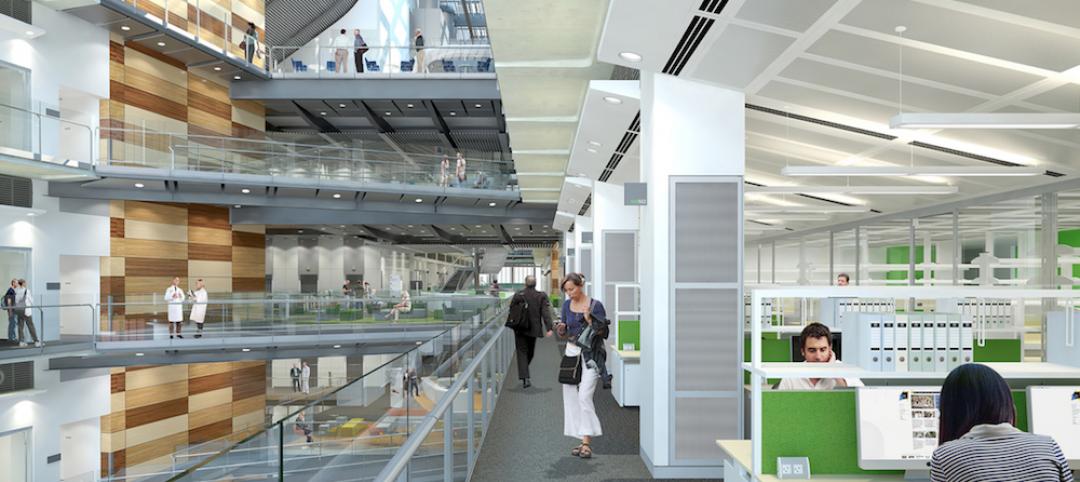Global real estate companies Lendlease and Ivanhoé Cambridge recently announced the topping-out of FORUM, a nine-story, 350,000-sf life sciences building in Boston. Located in Boston Landing, a 15-acre mixed-use community, the $545 million project will achieve operational net zero carbon upon completion in 2024.
FORUM’s flexible, 50,000-sf floorplates can accommodate multiple or single-floor tenants in both laboratory and office spaces. Its state-of-the-art mechanical and electrical infrastructure has been engineered to support cutting-edge research and development.
The design by SGA emphasizes the facility’s forward-looking focus, with a curvilinear façade punctuated with copper metal panels and tripled-glazed glass. In addition to a landscaped plaza leading to the double-height lobby, the publicly accessible areas include a community living room and café that can be used for both the building’s and the neighborhood’s programming. The first floor also features an art gallery that will showcase rotating works by local artists.
On the third floor, collaboration spaces in the conference center will serve a variety of meeting sizes and configurations. The third floor also will offer shared tenant amenities, including a kitchen and eating area, plus a 7,000-sf outdoor terrace with cabanas, seating areas, and grilling stations. Private terraces will be available for some tenant spaces.
The façade will integrate 1,600 sf of photovoltaic solar, and a rainwater cistern will reuse captured rainwater for building facilities. The 284-stall parking garage will include electric vehicle charging stations. The building also will have storage for 146 bicycles and on-site locker rooms. The project is targeting LEED Platinum, WiredScore Platinum, and Fitwel certification.
“FORUM reinforces Boston’s reputation as a global hub for medical and biological research while establishing Boston Landing as a destination for leading life sciences companies,” Mark Barer, director of development, Boston, Lendlease, said in a statement.
On the Building Team:
Owner/developer: Lendlease and Ivanhoé Cambridge
Design architect and architect of record: SGA
MEP engineer: BR+A Consulting Engineers
Structural engineer: McNamara Salvia
Construction: Consigli Construction
Related Stories
Laboratories | Sep 12, 2017
New York City is positioning itself as a life sciences hub
A new Transwestern report highlights favorable market and regulatory changes.
Laboratories | Aug 3, 2017
Today’s university lab building by the numbers
A three-month study of science facilities conducted by Shepley Bulfinch reveals key findings related to space allocation, size, and cost.
Laboratories | Jul 18, 2017
Pfizer breaks ground on new R&D campus in St. Louis suburb
The facility will consolidate the company’s local workforce, and provide flexible work and research spaces.
Building Team Awards | Jun 12, 2017
The right prescription: University of North Dakota School of Medicine & Health Sciences
Silver Award: North Dakota builds a new medical/health sciences school to train and retain more physicians.
Laboratories | Apr 13, 2017
How to design transformative scientific spaces? Put people first
While most labs are designed to achieve that basic functionality, a transformational lab environment prioritizes a science organization’s most valuable assets: its people.
Laboratories | Sep 26, 2016
Construction has finished on the world’s largest forensic anthropology lab, designed by SmithGroupJJR
The lab’s main purpose will be to help in the investigation, recovery, and accounting of Americans lost in past wars.
Laboratories | Aug 8, 2016
The lab of the future: smaller, flexible, tech-enabled, business focused
A new CBRE report emphasizes the importance of collaboration and standardization in lab design.
Laboratories | Jun 16, 2016
How HOK achieved design consensus for London's Francis Crick Institute
The 980,000-sf, $931 million facility is the result of a unique financing mechanism that brought together three of the U.K.’s heaviest funders of biomedical research—the Medical Research Council, Cancer Research UK, and the Wellcome Trust—and three leading universities—University College London, Imperial College London, and King’s College London.


